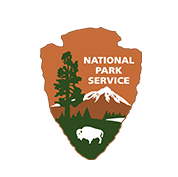Single Publication
Could not determine your location.
Boundary Prescribed Fire
Unit Information
Agency Name: National Park Service

Agency Name: National Park Service

Incident Contacts
- Erika HoopesEmail:Hours:Monday - Friday, 9 am - 5 pm
South Florida interagency prescribed fire project extends beyond boundaries to reduce hazardous fuels 01-17-2025
Boundary Prescribed Fire
Publication Type: News - 01/17/2025 - 11:00
FOR IMMEDIATE RELEASE
January 17, 2025
Contacts:
Public Information Officer Erika_hoopes@nps.gov
Big Cypress National Preserve Fire Duty Officer 561-923-5228
Everglades National Park Fire Duty Officer 305-242-7850
South Florida interagency prescribed fire project extends beyond boundaries to reduce hazardous fuels
MIAMI, Fla. – The National Park Service (NPS) in conjunction with the Miccosukee Tribe of Indians of Florida and the Bureau of Indian Affairs will be conducting a joint prescribed fire operation scheduled to begin in late January and continue through February. The 151,434-acre Boundary Prescribed Fire Project—located south of US Highway 41 between mile markers 36 and 44, including the Miccosukee Reserved Area—removes jurisdictional boundaries to complete prescribed burns with the assistance of federal, Tribal, state and local resources. The project aims to reduce hazardous fuel accumulations, create a critical fire break on the south side of the Miccosukee Reserved area to protect the Tribal Community from wildfire, enhance landscape resiliency, aid in ecosystem restoration, protect cultural values and improve firefighter and public safety.
“We are so grateful for this collaboration, which allows us to take a landscape-level approach to prescribed fire,” said Superintendent Pedro Ramos who oversees the NPS sites in South Florida. “Nature doesn’t adhere to our jurisdictional boundaries, so allowing a controlled burn to take a more natural path benefits the ecosystem and increases safety for people and our built environment.”
Due to the size and location, this project will take place in phases guided by agency specialists and the Tribe’s traditional ecological knowledge to benefit the mutual natural and cultural interests of the NPS and the Tribe. Phases 1 and 2 include treatment on the western and northern perimeters of the project area using Shark Valley Tram Road as a natural holding barrier on the eastern perimeter and securing residences and other values at risk. In Phase 3, once at-risk values are secured, managers will apply fire strategically, creating the desired level of fire intensity based on fuels and water levels in the remainder of the area, to achieve the ecosystem objectives specified in the treatment plan.
“The Tribe is very pleased to partner with the National Park Service and Bureau of Indian Affairs to execute these
important land management actions for the benefit of promoting robust resources and ecosystem health,” said Chief of Sustainability Officer Kevin Cunniff of the Miccosukee Tribe of Indians of Florida. “We are collectively embarking to do so in a manner based in, and informed by, the traditional knowledge and practices that Miccosukee people have used to help shape the Everglades and Big Cypress over thousands of years.”
Conditions for successful prescribed burn operations such as weather, fuel moisture and smoke dispersion are carefully tracked and considered in advance. The target timeframes are estimates and may change depending on environmental conditions, agency approval, resource availability and state burn authorizations and restrictions.
Fire has played a significant role in the history of South Florida, both naturally and through human activity. One of the primary objectives of prescribed fire is to decrease accumulated vegetation, which reduces the risk of catastrophic wildfires. As set forth in the Miccosukee Tribe and National Park Service Co-Stewardship Agreement, “Everglades National Park coordinates with the Miccosukee Tribe of Indians of Florida to minimize threats of wildland fire to the Miccosukee Reserved Area and greater Miccosukee community, a nationally recognized Wildland Urban Interface Community at Risk.” By deliberately burning specific areas, land managers can limit the density of fast-burning grasses that threaten nearby communities.
South Florida’s ecosystems are dependent on fire to sustain healthy, resilient ecosystems that resist exotic plant invasions, recover quickly from natural events such as hurricanes and support habitat for federally threatened and endangered species. South Florida’s Tribes, local, state and federal agencies are committed to reducing wildfire risk through proactive fuel management. Through collaboration and cooperation south Florida is removing lines from maps and treating the ecosystem on a landscape level.
For updates on burn operations and related closures, visit:
InciWeb interagency all-risk incident information management system: Flevp Boundary Prescribed Fire Information | InciWeb
Everglades National Park - https://www.nps.gov/ever/planyourvisit/conditions.htm
Big Cypress National Preserve - https://www.nps.gov/bicy/planyourvisit/conditions.htm
Photo 1 caption: An aerial view of a prescribed fire. Photo 1 credit: NPS photo by Michael Gue
Photo 2 caption: A map showing the planned Boundary Prescribed Fire Project Photo 2 credit: NPS
###
About the Miccosukee Tribe of Indians of Florida. The Miccosukee Tribe of Indians of Florida is a federally-recognized Tribal nation based in the Everglades. The Tribe has remained in the Everglades since fighting a four-decade-long guerilla war in order to avoid removal west of the Mississippi River. The Tribe operates various enterprises, including Miccosukee Casino & Resort, Miccosukee Golf & Country Club, Miccosukee Indian Village, and Little Trail Casino located at the Miccosukee Service Plaza.
About the National Park Service. More than 20,000 National Park Service employees care for America's 430+ national parks and work with communities across the nation to help preserve local history and create close-to-home recreational opportunities. Learn more at www.nps.gov, and on Facebook, Instagram, X, and YouTube.
About the Bureau of Indian Affairs. The BIA Division of Wildland Fire Management’s mission is to execute our fiduciary trust responsibility by protecting lives, property, and resources while restoring and maintaining healthy ecosystems through cost-effective and creative fire-management programs, collaboration, and promoting Indian self-determination. Learn more at www.bia.gov/DWFM, Facebookand X.

 InciWeb
InciWeb